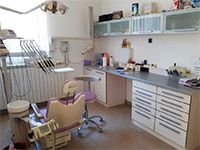Serbia - Affordable Dentists, Quality Care

Introduction
Serbia, officially the Republic of Serbia, its capital, Belgrade, ranks among the largest cities in Southeast Europe. The official language is Serbian, a standardized form of Serbo-Croatian, native to 88% of the population.
Doctors and surgeons in East Europe are world renowned for their knowledge and skills, can communicate in perfect English making misunderstandings almost impossible and last, but not least, excellent connectivity of East Europe makes it easy to reach in almost no time!
In this “mini dental market” country of Serbia has singled out itself as a destination offering the best deals & packages. All destinations in East Europe are 30-50% cheaper than clinics in the West, and (somehow) Serbia is 30-50% cheaper than all those destinations, enabling patients to save up to 70-90% in costs compared to their home country!
Coupled with a boom in “regular” tourism, the country is welcoming masses of dental tourists who also use this opportunity to enjoy in a unique blend of history, culture and temper of Serbia.
ADSL is the main broadband Internet technology available on the retail market, catering for 47% of all subscribers. Cable modems are used by 25% of subscribers, mobile Internet by 19%, and wireless access by 5%. Regarding Internet access at fixed locations, Telekom Srbija, and SBB, holds by far the largest stakes as service providers, the former in the ADSL segment and the latter in the cable distribution segment. In the wholesale market, the liberalization of international interconnections in 2008 enabled direct global Internet access to a larger number of operators, thus dispensing with necessity for the intermediary wholesale services of incumbent operator Telekom Srbija. Regarding wholesale access to end users’ premises, both bit stream and local loop unbundling are available to ADSL providers on the ex-ante regulated markets.
Serbia has a long tradition of welcoming healthcare tourists to their country. As far back as Roman times, people have been coming to Serbia for the thousand or more natural mineral springs and medicinal mud baths. Today there are more than three hundred and fifty thermal springs in over 50 resorts, all offering a huge range of complementary treatments. Vrnjacka Banja is the largest spa resort, and the only one where the mineral spas leave the ground at body temperature. These natural remedies make the perfect partner to the more modern medical treatments available at the numerous city centre clinics aimed at the healthcare tourist.
Combine this with stunning country retreats, where you can recover and recuperate amid fresh air and beautiful scenery, and you have the perfect recipe for a great value treatment trip.
Serbian Dental Industry
Private clinics are at the forefront of a Serbian initiative to attract foreigners with cheaper medical treatment and other benefits, like discovering the country’s sites or visiting its numerous thermal spas. This high quality private sector is one of the reasons that Serbia is climbing rapidly up the league of European medical tourism destinations. However ineffective the state reforms are to public healthcare, you can rest assured that as a medical tourist, the care you will receive will be of the highest standard, and the facilities equal to any in Europe.
Low price does not mean low quality in the case of Serbia. On the opposite, Serbian dentists and doctors are known for their expertise and Serbian dental colleges for their grueling and selective 5-year long training, so it’s no wonder that dental tourism in Serbia is one of the fastest growing niches.
While the Serbian healthcare system may still be struggling, facilities for overseas visitors are top quality. Healthcare tourism is still in its infancy in Serbia, but it is growing rapidly, with expanding facilities to match including clinics for cosmetic surgery, dentistry, fertility treatment and weight loss procedures. Prices are still relatively low, to attract business and establish Serbia as a major healthcare tourism destination, with savings of around 50%-60% compared to other European countries or the United States
Another good reason behind Serbia’s success is the combination of low treatment costs and friendly, welcoming staff. The fact that most clinics also speak English is an added bonus for many European and especially American healthcare travelers.
Getting There
Serbia can be reached by land, air and the Danube River. Belgrade's Tesla Nikola Airport (BEG) handles most international flights. The airport website has a full list of airlines servicing Serbia. In the south, Niš Constantine The Great Airport (INI) links Niš with countries including Italy, Germany, Slovakia and the Netherlands. Serbia's national carrier is Air Serbia. It code-shares with airlines including Ethihad Airways, Aeroflot, Alitalia and KLM.
By Land, You can easily enter Serbia by land from Montenegro, Croatia, BiH, Macedonia, Bulgaria, Romania and Hungary; coming in via Kosovo can present difficulties. Bus services to both Western Europe and Turkey are well developed. When crossing borders, officers will usually board the bus, take everyone's passports then return them after processing them; passengers wait in their seats. International rail connections leaving Serbia originate in Belgrade. Heading north and west, most call in at Novi Sad and Subotica. Heading east, they go via Niš. At border stops, officials will board the train and stamp your passport and check for relevant visas. Several trips from Serbia offer stunning slices of scenery, such as the route to bar on the Montenegrin coast. For more information, visit Serbian Railways.
If travelling to Serbia via Italy, several ferry companies make the crossing including Montenegro Lines which goes from Bari or Ancona to Bar, and Jadrolinija which runs services from Bari to Dubrovnik, Ancona to Split, and Ancona to Zadar.
Visitor Highlights
Serbia is home to a wide range of museums, national parks, nightlife destinations and architectural sights. Rich in history and beauty, Serbia is now becoming a popular tourist destination. In Belgrade, her capital and major city center, there is plenty of things to do to satisfy any age or taste, whether it is having a meal at an open air café before visiting a museum or checking out local artists working at the many exquisite galleries, both indoors and out, to be found throughout the country.
Novi Sad is another of Serbia's elegant cities, set away from Belgrade and offering visitors a little known 'pearl in the rough'. Picture perfect and set overlooking the famous Danube, this city also has plenty to offer including galleries, theatres and cultural centerpieces and landmarks. Known as the 'Serbian Athens', Novi Sad is the second largest city in the country of Serbia.
With its old world history, those interested in relics from hundreds of years ago will enjoy visiting the Ottoman sights of Nis, the third largest city in Serbia. Roman ruins and the Skull Tower, an ancient Turkish fortress, is just some of the historical features to be found, and enjoyed in Serbia, as well as the city of Nis.


